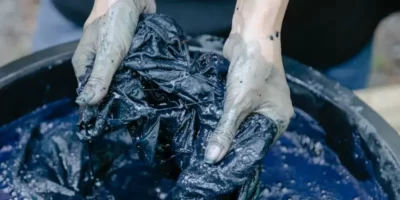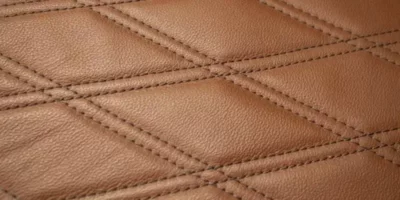Various objects in the bathroom can cause rust spots on the bathtub. How you can remove it depends on the coating of the tub. With the right means, it works very easily. So how do you get rid of rust on a bath or vanity basin? Our guide will show you how to remove rust from a bath or basin with easy steps and home remedies.
Relax in the bathtub, what could be nicer after a long day on your feet? Bathing fun is often clouded by ugly rust spots. This can be a rather superficial rust film, but deep rust can also form.
Remove rust from a bath or basin
Bathtubs can be coated differently. This also results in differences in the treatment and removal of rust stains . Although the bathtub is freshly cleaned , it can still have unsightly discolouration, which can be caused by residues of soap or shampoo. Over time, an ugly film is deposited on the surface. If you do not intervene in time, you risk that the deposits will eat more and more into the material and become stubborn rust. In the following, we will tell you how rust spots appear in the bathtub and what you can do to remove rust from a bath or basin.
How does rust develop?
Rust forms when iron comes into contact with water and oxygen. This chemical reaction can also be observed with ferrous alloys. A slight tension builds up between the surface of the material and the water. If oxygen does not come into play, nothing really happens. In the presence of oxygen, the cargo parts are increasingly transported to the environment and there is increased rust formation.
Bathtubs can have different coatings:
- enamel
- plastic
- porcelain
- ceramics
Modern bathtubs are often models made of special plastics that have fiber reinforcement. If rust spots appear here, it is only a matter of superficial deposits. Deep rust cannot form here. The situation is similar with ceramic or enamel bathtubs. However, even the smallest hairline cracks that are barely visible to the naked eye can ensure that the rust penetrates into the base of the bathtub, which contains iron. If the rust is only removed superficially, this will not do much. In this case, the substrate must be sealed so that no new rust spots form.
Remove superficial rust stains immediately
The bathroom has a humid, warm climate. This is the ideal breeding ground for flash rust. If you notice rust-like stains on the bathtub, these are usually triggered by metal objects that often come into contact with water. This can be hair spray or shaving foam cans as well as the forgotten cent piece or the hairpin. The water removes the rust particles from the metal and these accumulate on the tub.
»Tip: Surface rust stains should be removed immediately so that they do not stick to the surface.
It doesn’t have to be chemical cleaners. Vitamin C powder, which is dissolved in water, has proven its worth for superficial rust removal and is a great method to remove rust from a bath or basin.
Deep rust removal
Older models or free-standing bathtubs that decorate bathrooms with a retro look are often versions that have a metal body. If the metal contains iron, there is a high risk of rust formation. If the rust goes very deep, the superficial removal of the rust stains will not suffice. The rust can only be removed permanently from the substructure. For this, the bathtub must be completely exposed, which means a lot of effort. After the rust removal, you have to apply a new inner coating before you can get back into the tub.
What you shouldn’t be doing
Rust stains should not be removed with harsh cleaners. You will not achieve the desired results with scrubbing milk or bleach. The material is attacked by the chemical cleaners and deposits do not disappear, but settle even more intensely.
»Tip: Plastic baths in particular can be quickly damaged in their coating by harsh cleaners.
Home remedies for rust removal
For effective rust removal from bathtubs, you need the following products, which can be easily obtained in drugstores and supermarkets.
- vinegar
- oil
- salt
- lemon juice
- lime
- Weinstein
- hydrogen peroxide
Pastes are made from the above ingredients by mixing the following components:
- vinegar and oil
- Lime and salt
- Salt and lemon juice
- Weinstein and hydrogen peroxide
The rust spots are rubbed in with the respective paste over a large area. Then the mass should act for several hours. After about three to five hours, rinse the bath with hot water and the rust spots should be gone.
❖ Vinegar for acrylic tubs
Plastic coatings easily release rust film. Spraying the stains with vinegar has found an effective cleaning solution that can be used very well on smooth surfaces.
»Tip: Alternatively, lemon juice can also be used.
Vinegar or lemon juice should work in for about half an hour. The stains are dissolved by the acid and can then be easily scrubbed off. If the rust is stubborn, baking soda can also be added to the vinegar.
❖ Teeth whitening against rust
Surface rust spots, caused by spray cans or forgotten coins and hairpins on the edge of the tub, can be polished away by applying a little tooth whitening. Leave it on for a short time and then polish the stain away.
❖ Toothbrush as an aid
Rust stains can be worked on very well with a used toothbrush. Apply a gentle pressure with the toothbrush and the rust will loosen and only need to be wiped off afterwards.
❖ Use tub rubber
A tub rubber pays off in ceramic or enamel bathtubs. With the tub rubber, rust stains can be removed in dry and wet bathtubs. The material is not damaged.
❖ Rust removal in enamel bathtubs
A mixture of tartar and hydrogen peroxide has proven itself for rust removal in enamel baths. Mixing both substances creates a paste that is reminiscent of cake icing and can be easily spread over the stains. After about a quarter of an hour, the stains can be polished off with a toothbrush or pumice stone.
»Tip: Hydrogen peroxide has a brightening effect and can therefore also be used well against age-related discoloration on the edge of the tub.
Homemade universal cleaner for bathtubs
An all-purpose cleaner for the care of bathtubs, showers and Co. can easily be made by yourself.
For this you need:
- water
- bicarbonate of soda
- Kastilienseife
- essential oils
All ingredients are placed in a spray bottle. The mixture is sprayed over a large area on the surfaces to be treated and wiped off with a soft cloth after a few minutes.
»Tip: You can also use hydrogen peroxide instead of castile soap.
The best tips for bathtub cleaning
- Always remove dirty edges immediately after bathing.
- Limescale stains disappear with the help of water, vinegar and citric acid
- The bath can be polished with salt, vinegar and buttermilk.
- Rust stains that have formed around the drain disappear with baking soda and vinegar.
- Soda water ensures clean fittings.
- Small scratches can be polished away with the help of metal polish.
Prevent rust and discoloration – Here’s how
If you notice small damage to the coating of the bathtub, it should not be taken lightly. These can quickly penetrate deeper into the material and lead to the formation of stubborn rust.
The bath should be cleaned thoroughly after each bath. Then dirt has no chance to settle and there are no annoying discolourations or rust spots. Once the tub has been cleaned, it can be rubbed with a cut lemon. This not only helps to create a new shine, but also ensures that dirt does not eat into the material.




